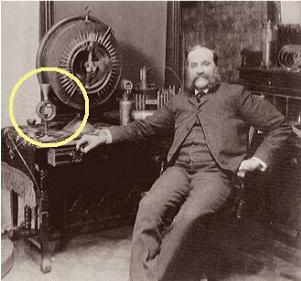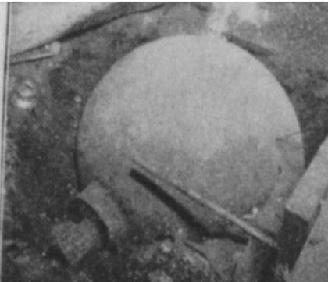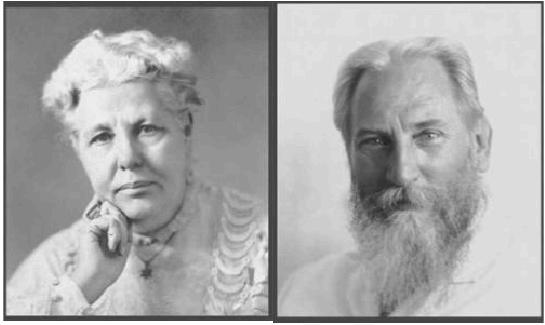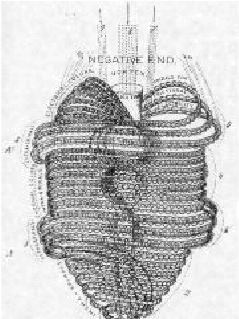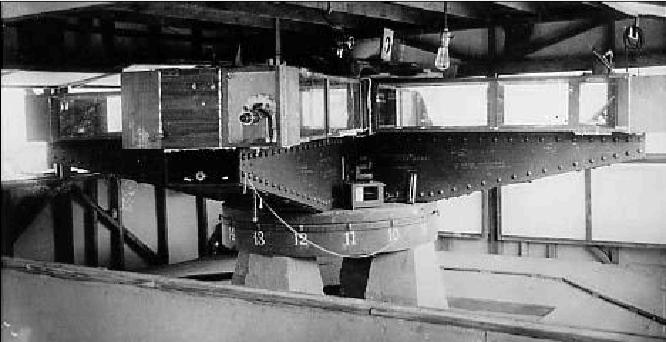Miller's work is hardly known or mentioned in today's "modern" physics as is is an embarressment to them of the stupidity of their theories. Nor do they mention many of the other experiments that prove aether's existence though not as rigorously as Miller. They instead reference the Michelson-Morley experiments as proof there is no aether when Miller clearly showed the existence with his interferemeter.
But aether theory has not died out. Glenn Starkman, a cosmologist at Case Western Reserve University in Cleveland, Ohio, in 2006 argued that dark matter doesn't exist and that aether can account for the conundrum that led scientists to posit "dark matter"; namely, galaxies behave as if they contain much more mass than is visible to astronomers. It is interesting to note that Starkman is at the same university where Dayton Miller did his research.
Aether Theoretical Results
Aether concepts and detailed theoretical analysis by alternative scientists have developed aether theory to extensive levels that prove some of the aether theories are a more sound basis that the views of mainstream physics as the aether theories embrace a wider view of creation; namely, they explain more throughly how the universe is constructed, resolving the short comings of the standard model. I will not get into the mathematics of these theoretical works as they are quite complicated, but I will summarize the important findings of some of the alternative theories of a universal aether. Internet research is available for those who wish to pursue a deeper understanding and validate what I say.
Paul Stowe and Bary C. Mingst have written several papers throughout the 1990s both together and separately developing various aether theory related constructs. Paul Stowe is a nuclear engineer in California and Barry Mingst is a well know professor of physics at the University of California at Berkeley. I have noted their ideas before in previous papers. Mingst and Stowe have discoursed extensively on aether as a fluidic medium. A notable summary of aether theory by Stowe is entitled "Simple Beauty" (July 1996). In this paper all the basic cosmological constants are defined and related to a hydrodynamic super fluid that is aether. This is not done in the standard classical model but constants are accepted without defining where they came from. Stowe and Mingst called the particle unit of aether, the Albert, and modeled it as a toroid; however, the structure of the toroid was not examined in detail as was done by Besant and Leadbeater.
David G. Yurth and Donald Ayres from the Nova Institute of Technology, Holladay, Utah have expostulated on the Y-Bias and Self Operating Criticality theory developed by them and members and associates of the Nova Institute (see their paper on the Internet "Y-Bias and Angularity: The Dynamics of Self-Organizing Criticality From the Zero Point to Infinity", © August 2005). They show how the current model fails to develop a comprehensive view of nature and that the standard model is based on a number of flawed and incomplete assumptions. The most glaring defect not describable by the mainstream model is that there is an underlying order in the cosmos. The Nova model of scalar interactions in nature describes and explains all the phenomena not accommodated by the standard model (i.e. fills the holes in the standard model). Yurth and Ayres provide a "scalar roadmap which describes how matter, energy, time and all other field effects arise from the Physical Vacuum". Aha - sounds like the aether to me. They also develop many of the basic field effects such as gravity, magnetism, and electric fields as did Stowe and Mingst.
David L. Bergman and Charles W. Lucas, Jr. have developed a classical structure of physical reality (atomic structure, field forces) based primarily on their view of the electric field or plasma filaments. While they deny the aether, their discussion of matter as composed of plasma filaments is similar to the aether but they have refused to use the name. They do not explain where plasma or electric fields come from as do Stowe and Mingst. It matters not the name, their theory looks a lot like an aether theory. Their two stable particle's are the electron and proton and modeled as thin rings (i.e. toroids) of charge rotating at light speed. Using classical theory and analysis they have derived a complete list all the nucleotides in the periodic table with more correlation to experimental analysis than the standard model. They defined many of the atomic constants, resolved the problems of Quantum theory (QT) and General and Special relativity (GRT and SRT), and derived a very cohesive model of aether. Examples of the hydrogen and helium atoms are shown.
The Next Frontier of Science
Copyright 2013 by Dan A. Davidson
Introduction
Science, in our present civilization, is a formal structure whose main function is to define how the universe operates. It has postulates, axioms, laws, and well as a body of evidence to support the laws. For aetheric science most of the evidence is collected from very highly legitimate sources. An axiom, or postulate, is a premise or starting point of reasoning. Classically, an axiom is a premise so evident as to be accepted as true without controversy. A Postulate is a basic premise on some aspect of science. To become an accepted "law" by a larger community of scientists much more research and validation is be required and when there is sufficient evidence shows the premise is true then it becomes a "Law". If at any time the postulate or law is shown to be incorrect it is back the drawing board. Modern science for the most part has given up this approach premise test approach and science has become a "consensus reality" that the orthodox scientists of the day decree it so regardless of subsequent facts. The concept of the aether, a universal energy, is one of those things which should have long ago been accepted.
Mainstream science is moving slowly and being dragged kicking and screaming into a belief of the ancient concept of aether; namely, a universal energy is the basis for all the natural forces we have discovered and studied as well as its manifestation as matter. I say "dragged" as they have been resisting the concept in the entire 20th century since the faulty Michaelson/Morley experiments could not find a significant aether drift close to the earth surface even though its existence was proven in many later experiments and stoutly ignored. If science wants to really make progress then the scientists in all areas of their endeavors must get into an understanding of the higher order aspects of aetheric energy. When they do they will never call it aether to keep from having too much egg on their faces but at least they will make some real progress. This chapter is to lightly touch on the history, the major advances already made in aether science, and to provide summary of new discoveries made that can potentially change the entire direction of our present civilization.
I deliberately use the spelling of aether with the "a" in front to distinguish it from the old anesthetic liquid name "ether", plus the aether was originally spelled this way by some sources.
I want to explain in greater detail how various aspects of aether manifests not only as the natural forces we are familiar with like electric and magnetic fields, gravity, etc. but how we as human beings are constructed and how we interact with aether on the various levels in which we operate. This will include our physical bodies, our mental functions, our emotional nature, and how we interact or can operate on higher levels of consciousness than the gross physical levels.
I will get into other aspects of aether such as various levels of aether. Many think aether is a simple particle phenomena with a specific size, energy level, and well defined characteristics. Mathematically, there may be stable aether particles as certain analysis leads to that as a possibility; however, the basic aether is just energy. Even the alternative scientific discoveries barely touch the "hem of the garment". There are gradations of aether associated with various levels of matter densities as well as higher order aspects which few have ever contemplated. For example, there are "aethers" associated with mental and emotional states. What effects do we have with our mental and emotional powers on our health and well-being by misqualifing the aether energy we get every day via our higher self, our I AM Presence, food, the air, etc? How can we improve ourselves, health wise, by understanding our personal relationships with aether forces?
Historical Aspects of Aether
Aether is not a new concept, on the contrary aspects of it can be found in ancient history.
Heraclitus (540 BC) used the word "Logos" in ancient Greek philosophy to mean a rational structure of the cosmos and this rational structure orders and controls the universe. European philosophical and scientific thinking was greatly influenced by Heraclitus.
Zeno of Citium c. 300 BC, founder of Stoic philosophy, believed Logos was the active reason pervading and animating the universe. It was conceived of as material, and is usually identified with God or Nature. The Stoics also referred to the Logos, as the law of generation in the universe and as the principle of Logos working in inanimate matter. Humans, too, each possess a portion of the divine Logos.
Philo of Alexandria lived from 20 BC to 50 AD used the term Logos to mean the living God and as the bond holding all things together, the binding force of the universe. Logos appears to be a name for some aspects of aether concepts old and new.
Rene Descartes in 1644 put forth a philosophy of Aether as all-pervading energy with particle like properties. Descartes assumed that the Aether was very much like air and as matter moved through it the aether was displaced.
John Ernst Keely (1890 - 1898) did extensive experiments with the aether but his work was too far out for mainstream scientific acceptance. This despite the fact that he was able to demonstrate astounding experimental feats he claimed were based on control of aether such as gravitation control, conversion of mass to pure aetheric force.
The Aetheric Reservoir under Keely Laboratory.
Hendrik Lorentz's aether theory (1892) was based on a motionless aether much like Descartes. This was the beginning of the downfall of aether concepts for the next century. The Michelson-Morley experiment followed that was to prove an aether drift as the earth moved through it. There was a drift but it was not the magnitude of aether drift anticipated so the mainstream scientists abandoned aether concepts.
In 1908, Theosophists Annie Besant and C.W. Leadbeater published their findings after 40 years of research into atomic structure. Their project was to verify the Hindu Scriptures knowledge of the aether by using clairvoyants to view the internal structure of matter. The Hindu Scriptures and Theosophy claim that the building blocks of matter in all the seven planes of nature is the Anu, the basic unit of the aether. They discovered that the proton and electron housed three particles each. They called them triads or triplets. The existence of three subatomic particles was scientifically verified by Science 70 year later and named them quarks. Besant and Leadbeater also discovered that the triads, the quarks, were not indivisible, but contained three particles each they named the Anu. They also postulated that the Anu was the final, indivisible form of physical matter. To do this they examined most of the elements for the internal atomic structure and published their findings in a book titled "Occult Chemistry". Figure 1 depicts the Anu as viewed by the clairvoyants.
Annie Besant Charles Leadbetter
Anu as seen by Clairvoyant's
Dayton Miller (March 13, 1866 - February 22, 1941) showed positive experimental results from over 20 years of research using light-beam interferometry. Miller originally worked with Morley to refine the Michelson-Morley experiment but were unable to prove the stationary aether, despite the fact that there was an aether drift. Miller spent many years after perfecting the interferometer which eventually yielded consistent results showing definite aether drift; namely, the Earth is moving through some type of medium. In fact, he was able to show that the Earth is drifting at a speed of 208 km/sec towards Dorado, a Southern Celestial Hemisphere with specific celestial direction. A picture of Dayton Millers interferometer is shown.
Dayton Miller light-beam interferometer (from Case Western Reserve University archives)
Summary of Theoretical Aether Theories
While all the various aether theories all have the good aspect of defining the aether and how it is converted to matter none of them have posited what the aether really is. In the historical section above I made some references to Logos and stated that some aspects of Logos were obviously related to aether. However, Logos has always been illdefined. I prefer the term used by the Masters as the "Master Power Flame" in a broader definition. This broader definition answers "what is in the aether?" The aether theories shows it forms the structure of the observable universe but how did it get manifested in the first place and what are its functional rules. The section on the Master Power Flame defines the aether in a broader context.
John E. Keely Laboratory with Liberator in background


